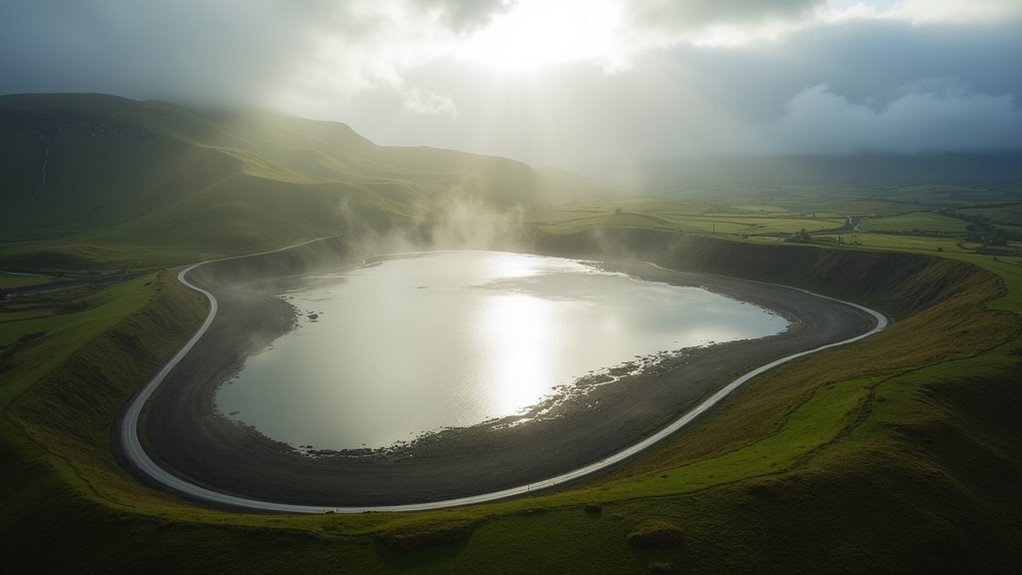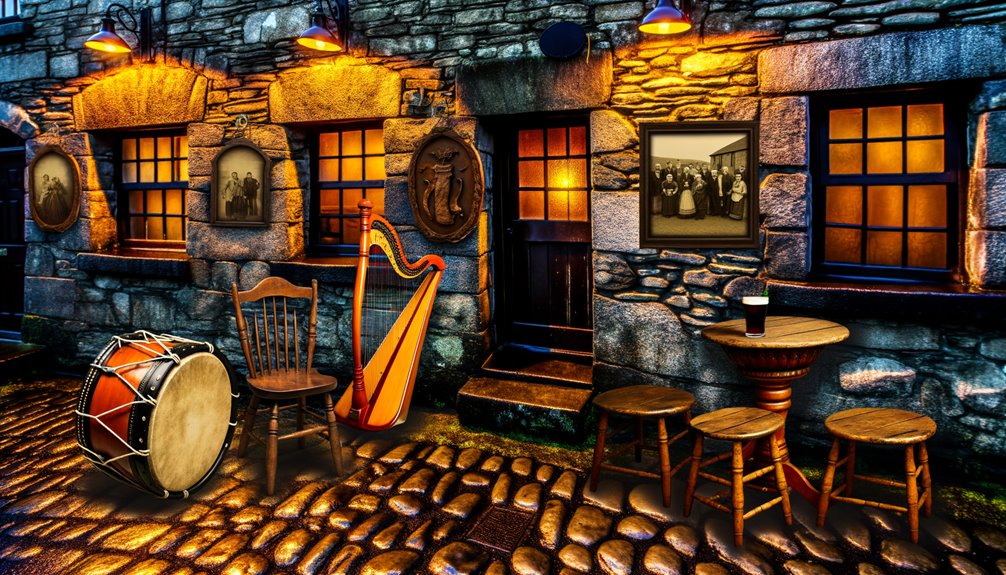While most tourists flock to Dublin’s Temple Bar or kiss the Blarney Stone, Ireland conceals a collection of peculiar places that defy explanation—vanishing lakes, ancient footprints frozen in stone, and islands accessible only by the country’s sole cable car.
Take Loughareema in Ballycastle, where water performs a disappearing act that would make Houdini jealous. This “Vanishing Lake” fills and empties through underground channels, leaving bewildered visitors staring at muddy ground where, just hours before, ducks paddled contentedly. It’s the kind of place that makes you question your sanity—or perhaps your sobriety.
Where water vanishes through underground channels, leaving bewildered visitors questioning their sanity—or sobriety.
The Marble Arch Caves stretch beneath County Fermanagh like nature’s own subway system, complete with three underground rivers and 11.5 kilometers of limestone corridors. Visitors float through darkness on small boats, their headlamps catching stalactites that look suspiciously like frozen waterfalls.
Meanwhile, up in County Mayo, Downpatrick Head juts into the Atlantic with sea stacks standing like ancient sentinels, their bases carved by waves that have been throwing tantrums for millennia. These spectacular formations have become part of Ireland’s heritage tourism narrative that spans over five millennia of history.
Cushendun’s caves carry their own celebrity status—they’re 400 million years old and moonlighted as Game of Thrones filming locations. But long before television crews arrived, these dramatic hollows echoed with real history, their walls remembering when Ireland was still figuring out what shape it wanted to be.
Then there’s Slieve Gullion’s passage tomb, where ancient builders engineered a 5,000-year-old light show. Every winter solstice, sunset pierces the inner chamber with surgical precision, proving our ancestors understood astronomy better than most modern folks understand their smartphones. The mountain also features scenic hiking trails that wind past this ancient monument, offering views that stretch across six counties on clear days.
Perhaps strangest of all is Dursey Island, dangling off Cork’s coast and accessible only by Ireland’s sole cable car to an island—a rickety contraption that sways over churning waters while passengers grip whatever they can find. The island itself rewards brave souls with isolation so complete you can hear your own thoughts (not always a blessing).
These forgotten corners of Ireland remind us that strangeness isn’t manufactured in tourist shops—it’s carved by time, hidden in limestone, and preserved in footprints that predate human language itself. Even the Hellfire Club, perched on Dublin’s Montpelier Hill, whispers of Ireland’s darker eccentricities with its ruined hunting lodge that hosted notorious 18th-century debauchery.









